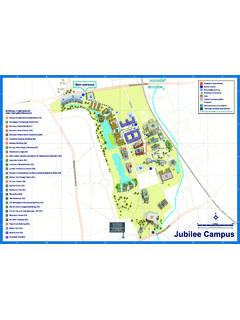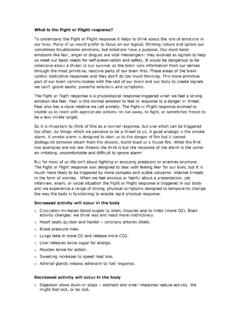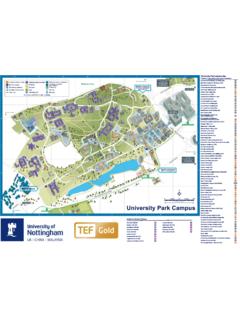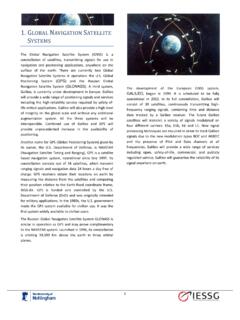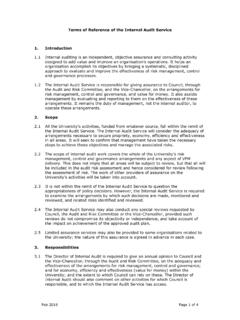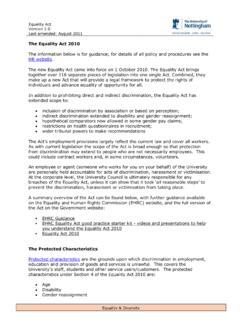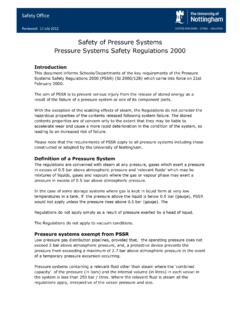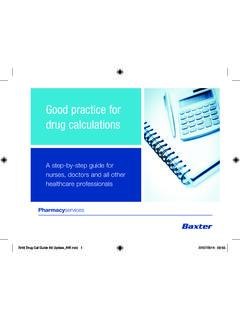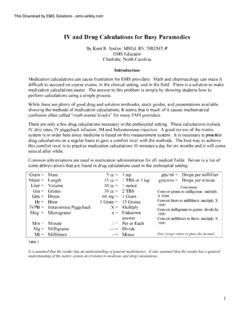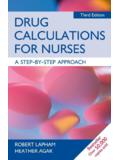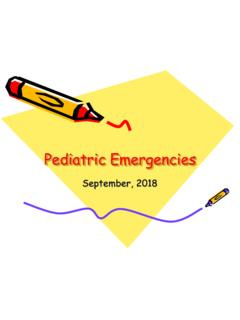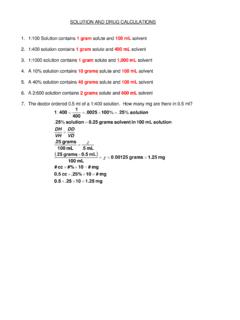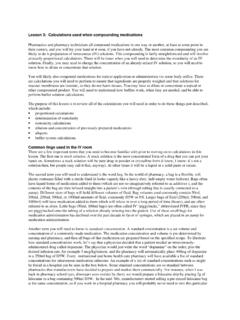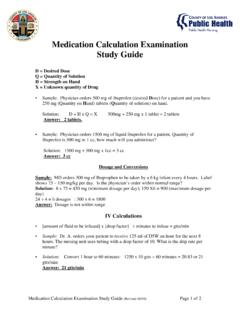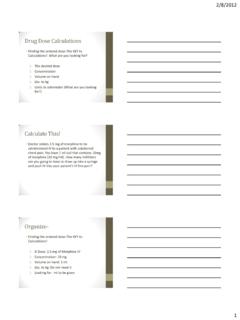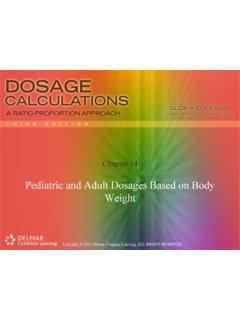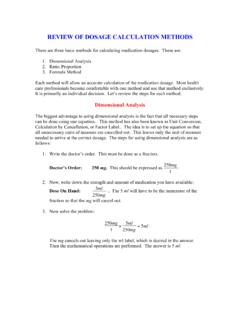Transcription of DRUG DOSAGE CALCULATIONS - University of Nottingham
1 drug DOSAGE CALCULATIONS THE University OF Nottingham SCHOOL OF NURSING updated Feb 2001 Mathematics and drug Administration Why is it important? During your career you will often be called upon to administer or supervise the administration of all types of medicines. As part of the course you will be taught how to do this safely and efficiently. However, the achievement of this aim requires the development of a certain degree of mathematical skill.
2 The required level is not high, but attaining it is necessary to ensure that the safety of patients is not compromised. During the course your mathematical ability will be examined by means of a series of formative tests. These will demonstrate whether you have the necessary level of mathematical ability to competently administer and supervise the administration of medicines. The tests have been designed to help you assess your abilities and identify your weaknesses. These can then be addressed by determining an appropriate course of study.
3 There are two tests within the Common Foundation Programme (CFP) and further, more comprehensive tests of your ability to administer medicines will follow in the branch programmes. The recognised pass mark for the tests within the CFP programme is 70%. If your mark falls below this figure, you are required to seek tutorial support. Following each test your paper will be sent to your group tutor and he or she will discuss your performance and if necessary a study strategy will be determined to improve your skills.
4 After completing this course of study you will be required to take a further test to evaluate your progress If I need help what do I do? You may approach your group tutor for help, or he or she may refer you to other tutors (see below) experienced in teaching in this area. Depending upon the demand these tutors will arrange small group tutorials, individual tutorials or a combination of both. Other sources of help include easy to use computer programmes and books from the Greenfield library.
5 Tutors willing to give assistance. Dave Hilton C Floor Dave s Office is on C floor room 44, QMC Tel - 44007 Jill Wakefield D Floor Jill s Office is opposite Ward - 43234 Numeracy and drug CALCULATIONS This handout covers a variety of numeracy based tasks which nurses and midwives may be required to perform in practice. These include drug CALCULATIONS and setting drip rates on the controls of intravenous infusion controllers. The handout covers the following: SI units and conversions, calculating drug quantities in both tablet and liquid form, and calculating intravenous flow rates and drip rates.
6 Exercises are included at the end of each lesson. Answers are on the back page. Units This is another name for the metric system of measurement. The aim of metrication is to make CALCULATIONS easier than with the imperial system (which includes ounces, pounds, stones, inches, pints etc). SI stands for Systeme Internationale and it is now recognised as the standard system for measurement in most disciplines around the world. It was introduced in the NHS in 1975. The SI system defines a base unit for a particular measurement (for example the gram for measuring weight) and a prefix (eg kilo, milli) when the actual numbers in the measurement become very large or very small.
7 For example one millionth of a gram could be written as or 1mcg. The second version is easier to read than the first and easier to work with once you understand how to use units and prefixes. It is also less likely to lead to errors, especially when administering drug doses. The following describes some things that are measured, the name of the unit used and the recognised abbreviation or symbol: What we measure SI unit symbol length metre m weight (mass)
8 Gram g volume litre l, L temperature degree Celsius oC The following prefixes are also used: Order of size Prefix symbol one thousand kilo k one thousandth milli m one millionth micro micro.
9 Notes Although the unit for litre is l, ie a lower case L, this has caused so much confusion because it looks exactly like a 1, ie number one. It is acceptable to use upper case L instead and this is in fact what you will find in drug Directories such as the British National Formulary (BNF). Micro is a special case. The Greek symbol (micro) is often misread as m (milli) particularly if the handwriting is poor. For micrograms you may use mcg or better still write the word microgram out in full. Using Units When a measurement is very large or very small, using the unit on it's own becomes impractical.
10 If we had a drug that was very potent, a patient may only require a tiny amount. If this was just one millionth of a gram, this could be written as but this can easily be misread. It would be very easy to confuse it with for example. By using prefixes the same quantity could be written as 1mcg or as 1 microgram, either of which is clearer to read. By definition, 1 gram = 1000 milligrams and 1 milligram =1000 micrograms Sometimes you may have to convert a quantity from one unit to another. A common example is converting a quantity given in milligrams into grams.

